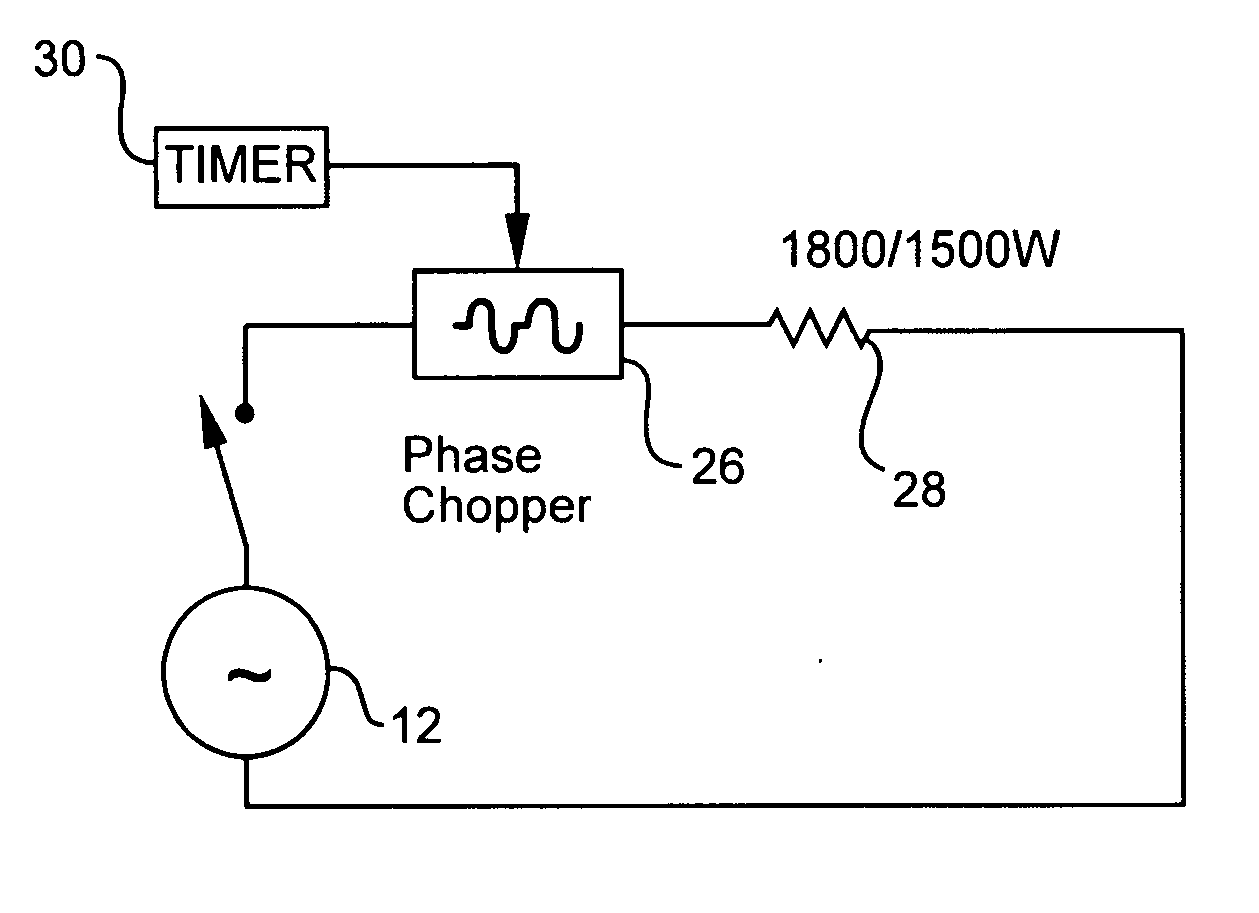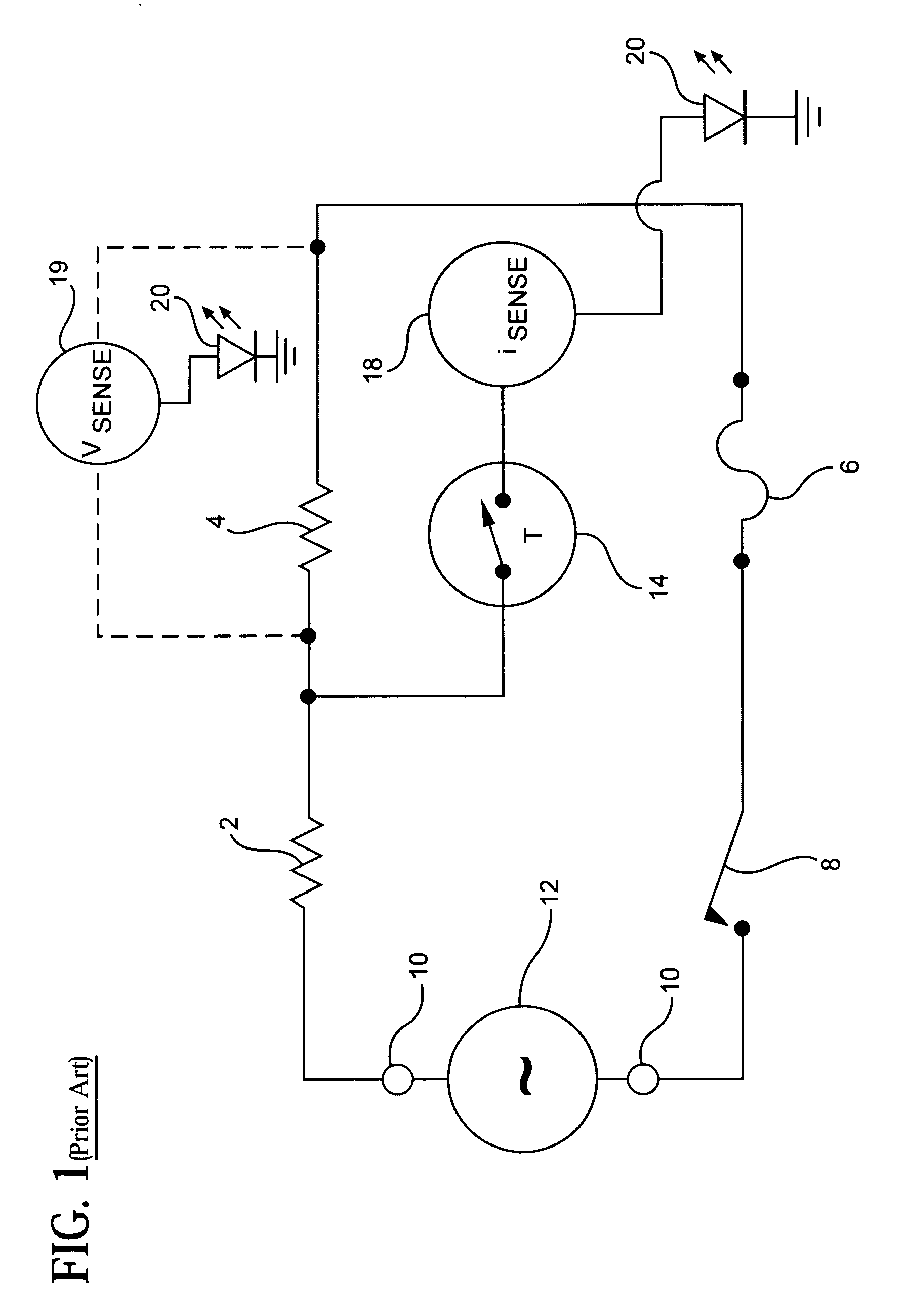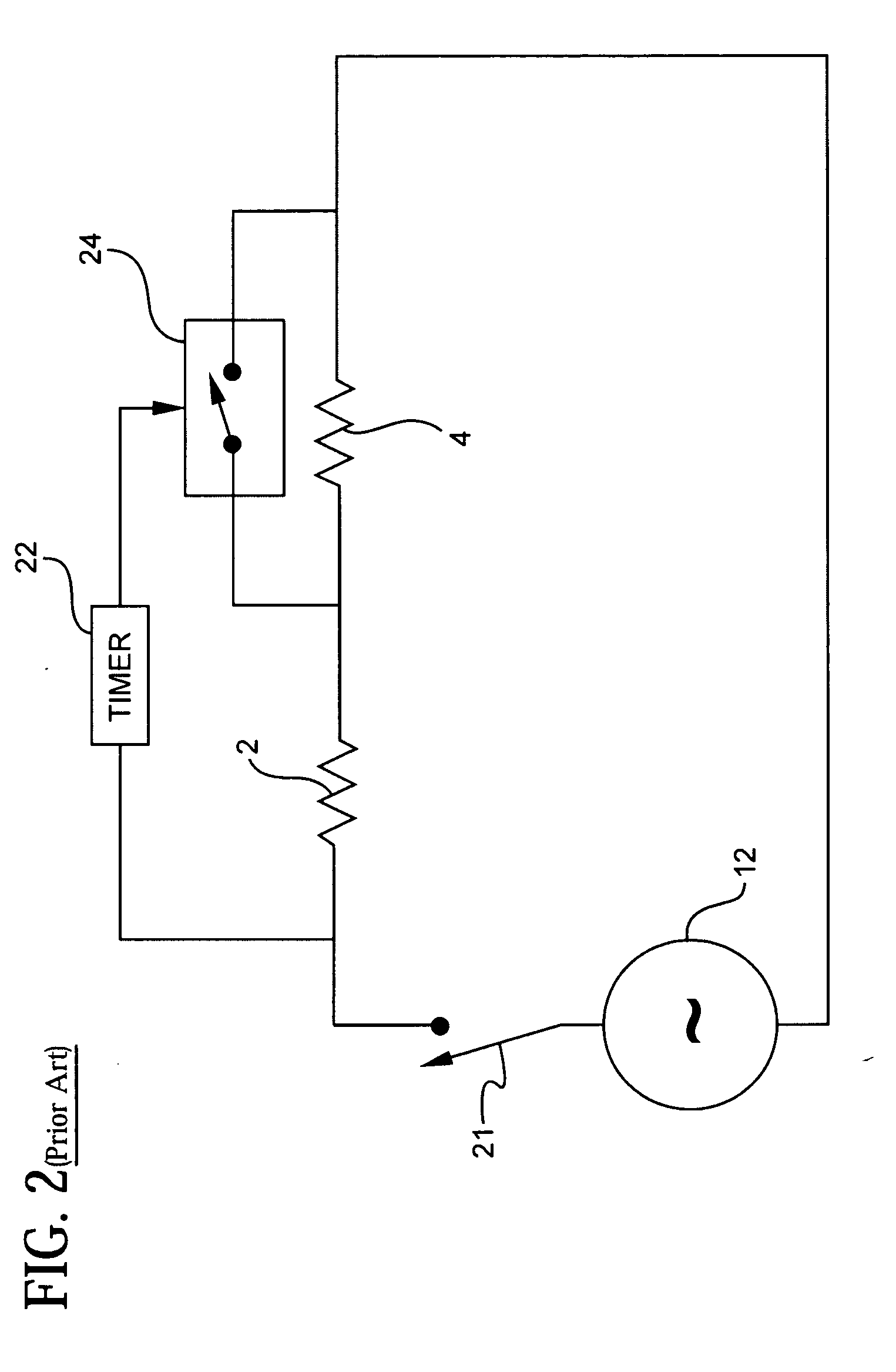Multi-power multi-stage electric heater
- Summary
- Abstract
- Description
- Claims
- Application Information
AI Technical Summary
Benefits of technology
Problems solved by technology
Method used
Image
Examples
first embodiment
[0033]FIG. 1 is a schematic diagram of a heater circuit described in U.S. Pat. No. 6,233,397, which is incorporated herein by reference. The heater of FIG. 1 includes a series circuit formed by the connection of a first resistive heating element 2, a second resistive heating element 4, a thermal fuse 6 and a high-limit normally closed thermostat 8. Terminals 10 are included to attach the series circuit to an external power source 12.
[0034] The heater circuit of FIG. 1 further includes a thermal switch 14, which is connected in parallel with the second resistive heating element 4. Thermal switch 14 operates in a normally closed (low-resistance) state when the device is at a first temperature, and an open (high-resistance) state upon reaching a second, higher temperature. Preferably, thermal switch 14 is a positive temperature coefficient (PTC) device that latches in the open state until power is removed from the circuit or the user intervenes.
[0035] When the power source 12 is first...
second embodiment
[0038]FIG. 2 illustrates a heater circuit described in U.S. Pat. No. 6,233,397. The heater circuit in FIG. 2 includes the first resistive heating element 2, second resistive heating element 4, power source 12, and a single pole, single throw (SPST) switch 21 connected as a single series circuit. The heater further includes an electrically controllable switch 24.
[0039] The electrically controllable switch 24 includes first and second switch terminals that are electrically connected across the second heating element 4. The electrically controllable switch 24 also includes at least a third control terminal that receives a control signal. In response to the received control signal, the switch terminals open (high resistance) or close (low resistance). The electrically controllable switch 24 may take the form of a solid-state switch or conventional relay. In this circuit configuration, when the switch terminals are closed, the second heater element 4 is bypassed (shorted) in the series c...
fourth embodiment
[0046]FIG. 4a shows a two-stage heater circuit formed in accordance with the present invention using a phase chopper circuit 26 connected in series with a resistive heating element 28 capable of providing different power levels. In this embodiment, the power source 12 is preferably connected across the series combination of the heating element 28 and phase chopper circuit 26.
[0047] The phase chopper circuit 26 is preferably implemented using one or more thyristers, triacs, diacs, and / or silicon controlled rectifiers, as described in further detail in U.S. Pat. No. 6,294,874, which is incorporated herein by reference. A timer circuit 30 preferably provides a control signal that controls the phase chopper circuit 26 to trigger at a particular point on the sine curve of the AC power signal provided by the power source 12. The timer circuit 30 is preferably implemented by using an appropriately configured 555 integrated circuit timer or other conventional timing circuit known in the art...
PUM
 Login to View More
Login to View More Abstract
Description
Claims
Application Information
 Login to View More
Login to View More - R&D
- Intellectual Property
- Life Sciences
- Materials
- Tech Scout
- Unparalleled Data Quality
- Higher Quality Content
- 60% Fewer Hallucinations
Browse by: Latest US Patents, China's latest patents, Technical Efficacy Thesaurus, Application Domain, Technology Topic, Popular Technical Reports.
© 2025 PatSnap. All rights reserved.Legal|Privacy policy|Modern Slavery Act Transparency Statement|Sitemap|About US| Contact US: help@patsnap.com



